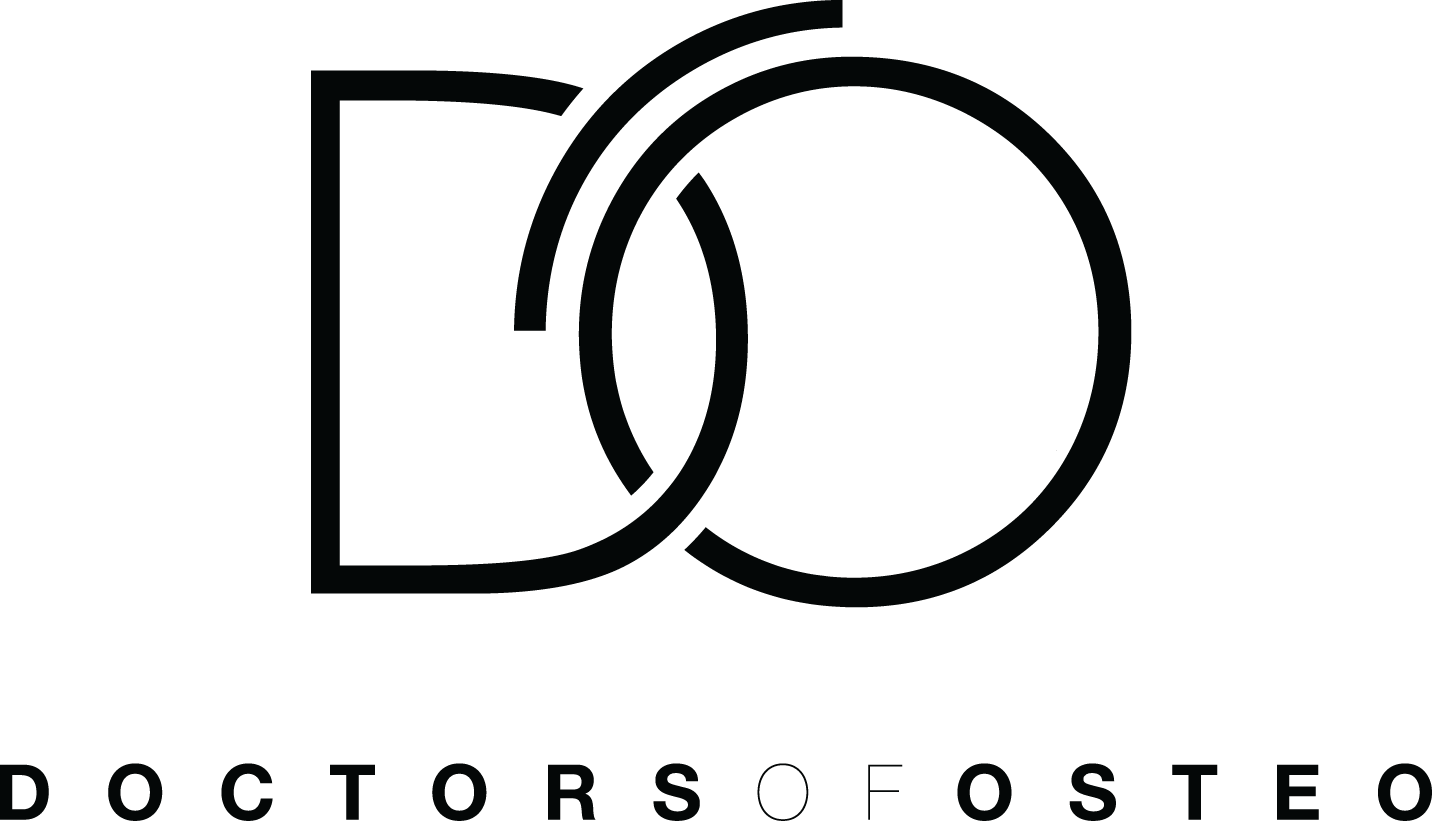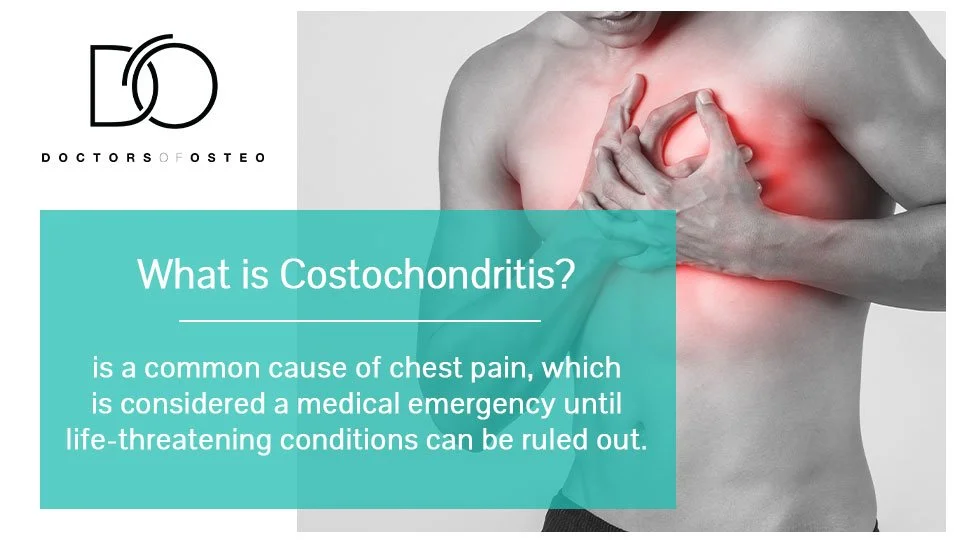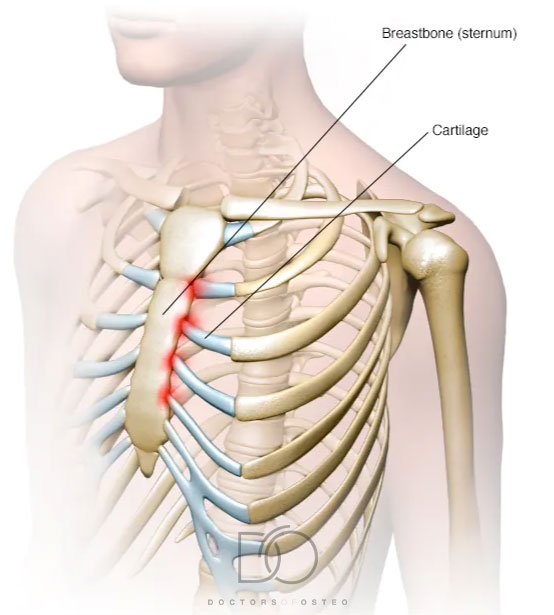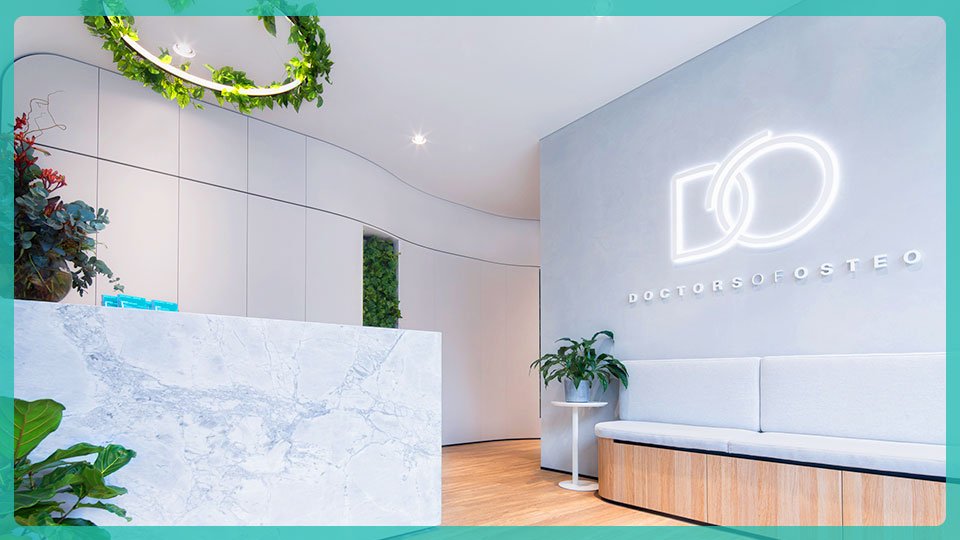Costochondritis (Rib pain in front of chest)
What is Costochondritis?
Costochondritis occurs where there is inflammation of the cartilage that connects the rib bones with the breastbone (sternum). This inflammation results in chest pain and tenderness, often at the fourth, fifth and sixth ribs. Pain is usually sharp and located on the front chest wall. However, in some instances, it may radiate to the back or abdomen to cause back pain or belly pain.
Chest or rib pain may worsen with:
A particular posture, such as lying down
Pressure on your chest, such as wearing a seatbelt or hugging someone
Deep breathing, coughing and sneezing
Physical activity.
Costochondritis does not cause chest swelling. If you are experiencing chest pain, tenderness and swelling, then it is likely that you are suffering from a condition called Tietze’s syndrome. Tietze’s syndrome causes localised swelling to the joints involved the second and third ribs, as well as the symptoms associated with costochondritis.
Costochondritis also does not cause shortness of breath. If you are having trouble breathing and are experiencing sudden chest pain, dial 000 immediately and ask for an ambulance assistance.
What causes Costochondritis?
The cause of costochondritis is usually unknown. Inflammation may be caused by:
Severe coughing
A chest injury
Physical activity, particularly involving lifting
Autoimmune disease or infection
What is Tietze Syndrome?
Tiezte syndrome is a rare, inflammatory disorder that is often confused with costochondritis. The exact cause of Tiezte syndrome is still unknown. The condition is characterised by chest pain and swelling of the cartilage of one or two of the upper ribs (usually second or third rib). The pain may radiate to the neck, arms and shoulders and worsens with sneezing, coughing or strenuous exercise. Tietze syndrome usually occurs in individuals younger than 40 years old.
Who is at risk of developing Costochondritis?
Costochondritis affects females more often than males (70% versus 30%), and is most common in people over the age of 40 years old.
How is it Costochondritis diagnosed?
The diagnosis of Costochondritis is usually achieved by reproducing the complaining pain when the practitioner palpates the affected joint of the chest wall that connects the rib to the breastbone. They will assess for any tenderness and swelling during the physical examination.
Although costochondritis is usually self-limited and benign, a more serious cause of chest pain should be ruled out especially in patients that are 35 years old or older, those with a history or risk of coronary artery disease, and any patient with heart symptoms. Your practitioner may perform a heart examination, gastrointestinal examination or may request an electrocardiogram and a chest radiograph (CT scan or MRI) to eliminate any serious conditions.
How do I know if I’m having a heart attack VS Costochondritis?
Chest pain caused by Costochondritis can mimic chest pain caused by a heart attack. Both pains begin from the chest walls and usually involves the joints between the breastbone and the ribs. However, pain caused by Costochondritis is usually described as sharp and worsens with movement, respiration and simple palpation of the site. Heart attacks (clinically known as angina pectoris) are characteristically a heavy crushing sensation at the site of the heart. Chest pain that is not reproduced by touch usually indicates a cardiac condition. It also worsens with exertion such as walking uphill.
Costochondritis will also persist through the day, while pain due to angina pectoris tends to wax and wane. Cardiac pain also characteristically radiates to the arm (usually left), jaw, neck or upper back.
What treatments are there if you have Costochondritis?
Costochondritis often gets better after a few weeks, but self-help measures and medication can manage the symptoms of the rib pain.
Home Management Plan for Costochondritis?
Avoiding aggravating activities: Costochondritis can be aggravated by any activity that places stress on your chest area, such as strenuous exercise, or even simple movements like reaching for a cupboard. Any activity that worsens your symptoms should be avoided until the inflammation in your ribs and cartilage has improved.
Ice/Heat: A recent study has found that with most musculoskeletal conditions, the benefits of heat versus ice is really up to patient preference as they found one did not work significantly better than the other with many conditions. This means that experimenting with the two to see which your pain responds to is the best method.
What type of medication is suitable for Costochondritis?
Your GP may prescribe you some medication to reduce inflammation such as ibuprofen or naproxen. Side effects might include damage to your stomach lining and kidneys, so be sure to speak to your GP and use only as directed. Severe pain may be dealt with prescription of medications containing codeine, such as hydrocodone/acetaminophen (Vicodin, Norco) or oxycodone/acetaminophen (Tylox, Roxicet, Percocet). However, it must be noted that narcotics can be habit-forming.
If conservative measures don't work, your doctor might suggest injecting numbing medication and a corticosteroid directly into the painful joint.
Can Osteopaths treat Costochondritis?
Your osteopath will be able to help you identify the actions in your day-to-day life, which may be contributing to your condition.
Your osteopath may introduce gentle stretching exercises for the chest muscles. Pectoralis major and pectoralis minor stretches can greatly reduce the severity of pain as well as reduce the rate of reoccurrence.
Nerve stimulation. In a procedure called transcutaneous electrical nerve stimulation (TENS), a device sends a weak electrical current via adhesive patches on the skin near the area of pain. The current might interrupt or mask pain signals, preventing them from reaching your brain.
Specific soft tissue, joint manipulation and adjunct treatment techniques are just some of the modalities that can be implemented during your 45min appointment to promote tissue healing and decrease inflammation.
What stretches should I do for Costochondritis?
Standing parallel to a doorway, have your forearm flat against the wall.
Slowly bring one leg in front of the other and lean forwards until your feel a stretch in the chest.
Hold for 30 seconds. Repeat with the various positions.
Our team of qualified osteopaths serve the areas of Hawthorn, Kew, Balwyn, Canterbury, Camberwell, Richmond and Glen Iris. If you’re experiencing rib pain in the front of your chest that may be symptoms of costochondritis, book an appointment with one of the caring osteopaths at Doctors of Osteo for help.
Providing healthcare with our osteopaths near me in Hawthorn, Hawthorn East, Kew, Balwyn, Canterbury, Camberwell, Camberwell East, Richmond, Malvern and Glen Iris.



